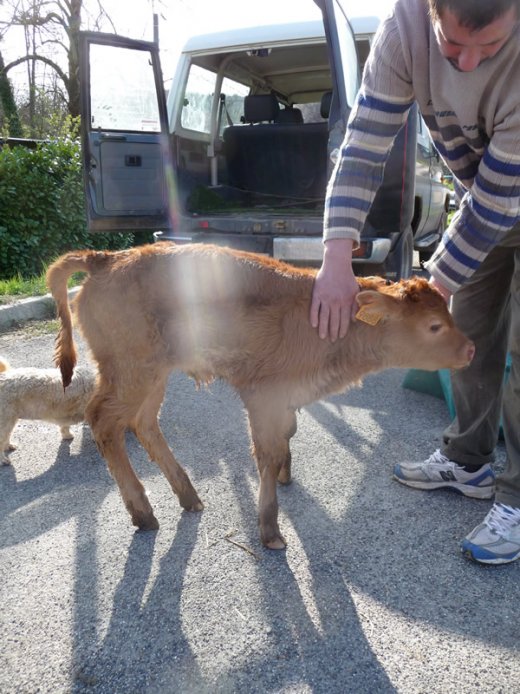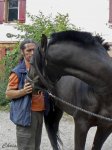A young 8 day old calf is presented in consultation because it gets up only rarely and with difficulty.
This calf was born quite normally and did well for two days. By the third day, he suddenly showed, without fever, a shortness of breath, trembling of the hindquarters and weak forelimbs. It gets up more and more difficultly and stays down for too long period of time.
The owner also noticed that day by day, a hollow was formed in front of the sacrum, as if the lumbar vertebras had sunk.
The hypothesis diagnostic was obvious and quickly reinforced by a density test at the insertion of the terminal filum (first caudal vertebras).
Obviously, the third day, the apparent mechanism of ascent of the spinal cord [1] had "seized" for an undetermined reason, perhaps a trauma.
The result is an increase of medullar tensile strength (FTM, tethered chord syndrome in Anglo-Saxon) [2]. Symptoms associated with this syndrome are varied and depend on the age of occurrence, duration, and intensity.
Here the FTM, estimated from the tissue density is approximately 150 g when the norm is 20-40 grams. This is accompanied by cell damage in the spinal cord and therefore a nervous malfunction: tremor in the back and weakness in the forelegs.
In order to understand, it is necessary to imagine the marrow as the thread of a pearl necklace (one pearl = one vertebra) and that the thread too tight inside the column "knocks" at the arcs of the curves in the pearl necklace i.e. on the lumbar kyphosis and on the lordosis between the shoulders, especially at these places the spinal cord (wire ...) is thicker to let out the nerves in the limbs. Hence the appearance of acute symptoms on the post (tremors) and anterior (weakness). This corresponds to each member to a level of dysfunction: weak > earthquake, or previous > post because the curve at the previous is more pronounced.
Hollow of the last lumbar vertebras is due to a quick adaptation of the bends in order to reduce tension on the spinal cord, trying "to shorten the column".
The treatment is then to reduce tension by tissue techniques. In the case of this calf, the tension after treatment is estimated at 50 grams.

On the car park of the veterinary practice, the stressed calfmanagdto get up, but the silhouette is quite noticeable: raised tail, proximal part of the sacrum diving , back arched and posterior carried under him. All signs of a too high FTM.
It is also prescribed a homeopathic remedy; in this interesting case: Silicea 9 CH.
Two days later, the news are good with a calf which is not afraid anymore, nor breathless, and stands up normally... Homeopathic treatment is interrupted; the calf can no longer be caught in the field…



